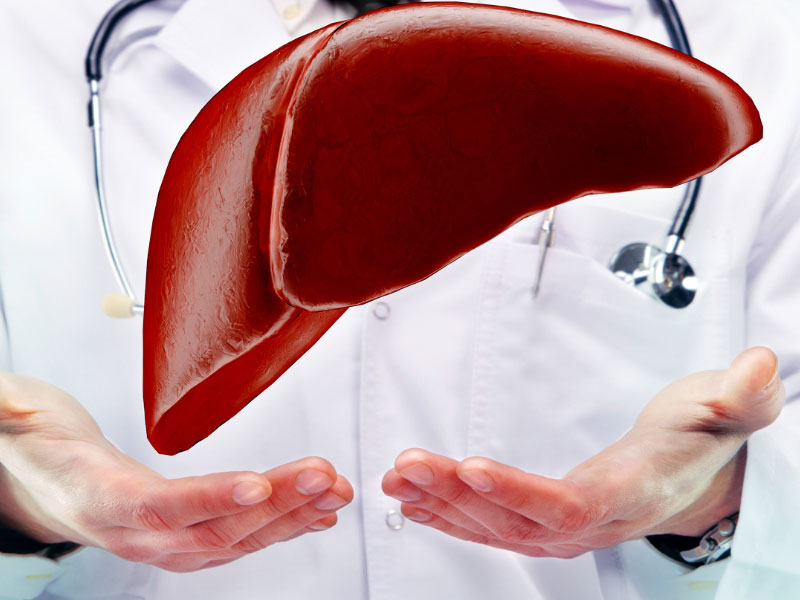Chronic Liver Disease (CLD) is a set of diseases characterized by liver function deterioration due to chronic inflammation. At its most advanced stage, CLD also leads to the development of Cirrhosis. Cirrhosis is characterized by the deep scarring of the liver tissue, caused by the replacement of the healthy liver tissue with damaged tissue as a result of the cell repair process done by the body. Our liver is responsible for the production of new proteins and bile which aids digestion and removal of waste such as toxins and medicines for the body. The scar tissue leads to decreased flow of blood through the liver. Loss of liver cells slows down liver functions hence impairing our bodies’ capacity to digest and produce. Cirrhosis can potentially be fatal in its later stages if liver care is delayed.
According to recent studies, CLD is a worldwide health concern with 844 million people impacted and over 2 million deaths annually.
Persons at risk of getting chronic liver disease, have a history of alcoholism, viral hepatitis, obesity, diabetes, history of fatty liver, and autoimmune diseases.

People in the initial stages may be very much asymptomatic, and it can just be noticed on routine body checkups. However, patients may go through a feeling of weakness, and there might be a sudden loss in weight without any reason. The patient might also contract Jaundice in the later stages.
The measurement of the amount of fibrosis in the liver is called staging. There are 5 stages to it:
Stage 1: No scarring on the walls (no fibrosis)
Stage 2: Mild scarring (mild fibrosis)
Stage 3: Scarring process has started and extended outside the liver area (significant fibrosis)
Stage 4: Fibrosis starts spreading and forms bridge with other fibrotic liver areas (severe fibrosis)
Stage 5: Cirrhosis (advanced scarring)
Compensated Cirrhosis: there are no noticeable signs of liver disease and no major abnormality in the blood tests. There can be a few features of chronic liver disease in radiological investigations and liver Biopsies.
Decompensated Cirrhosis: the symptoms, and signs of chronic liver disease is very noticeable, with worsening of blood investigations with obvious features of CLD and worsening in radiological tests and biopsy (not routinely recommended). The chances of at least one life-threatening complication are higher in decompensated patients and need immediate medical attention. Survival in such patients with decompensated cirrhosis is approximately 6-12 months.
Diagnosis: Your doctor will ask you to undergo various tests and physical examinations looking at your past medical history. You may have tests such as:
Blood tests: These include tests to check if your blood is able to clot and liver function tests to determine the proper functioning of the liver.
Liver Biopsy: To find out the type of liver disease, small samples are taken from your liver with a needle and accessed under a microscope.
You might have to undergo various imaging tests as advised by your doctor. Namely:
If the diagnostic tests suggest that you have been suffering from Liver Cirrhosis your doctor may suggest a treatment plan with various options to slow down the progression of scar tissue buildup and prevention/ treatment of any other health issue. Cirrhosis is a progressive disease, so the liver damage can sometimes reverse or improve if whatever is trigging it is gone.
In case you are from Delhi NCR, try consulting the best Specialist in the region.
Preventive steps to avoid the occurrence of chronic liver disease include the following:
Treatment depends upon the stage of cirrhosis, it’s mainly medical in the compensated stage. There is no permanent cure for chronic liver disease as damage to the liver is irreversible. Most of the treatment is based on the removal of offending agents, precautions to slow down the damage, and prevention and treatment of the complications. Such patients are advised to stop drinking alcohol, offending medications and are suggested to take a balanced, healthy, low-fat diet.
Lifestyle modifications: Changing your lifestyle can not cure cirrhosis completely, but can definitely stop from getting worse. Dietary changes must be made, including cutting back on calories and avoiding fast food, soda, and big meals. You may detox your body by drinking lots of fluids, enjoying healthy snacks, including enough of fruits and vegetables in your diet, avoiding drinking too much alcohol, and engaging in daily exercise. Following the doctor’s recommendations for eating wholesome foods and boosting physical activity is crucial.
Diuretics: It boosts urine production, which further aids in eliminating any excess water and salt content.
Ammonia Reducer: It aids in lowering the body’s ammonia levels and stabilizes its effects.
Beta Blocker: Beta blockers can help reduce the pressure on the eyes when used as eye drops. It even helps in bringing down the patient’s heart rate and blood pressure.
Antibiotics and Antiviral Drugs: By destroying the bacteria and blocking their replication and multiplication, they aid in stopping their growth.
Although liver cirrhosis cannot be cured, in extreme circumstances a liver transplant may be done to address the damage caused by the disease. The surgical procedure involves a liver transplant in which a healthy donor might give a portion of their liver to the patient.
We are available 7 days a week and have specific clinic hours with all doctors on staff. Outside of normal clinic hours you can receive an on call Doctor or Nurse at your nearby hospital if needed.